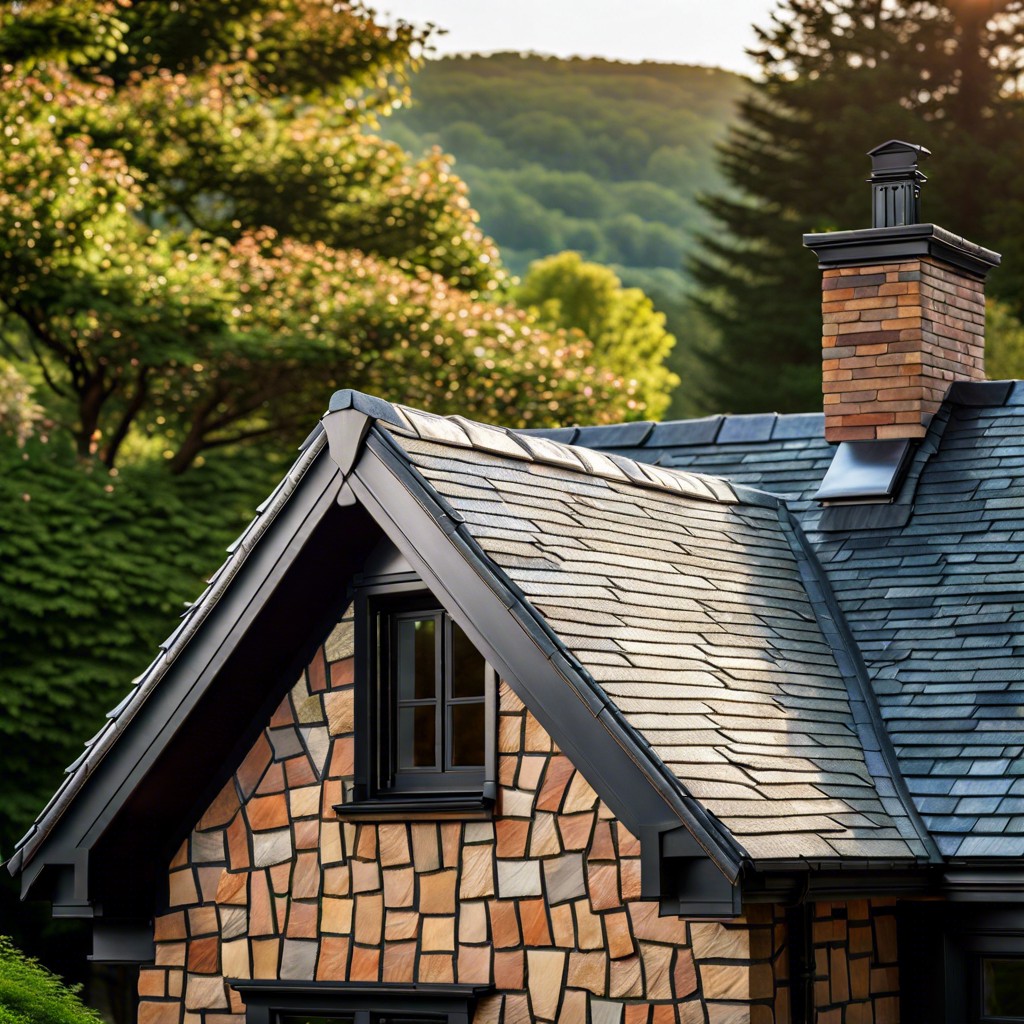Last updated on
Discover how to install a standing seam metal roof with this easy-to-follow guide that blends practicality with just a dash of humor.
Standing seam metal roof installation is not for the faint-hearted DIYer but can truly be a rewarding endeavor. Imagine outfitting your home with a shiny, sleek metal bonnet that laughs in the face of hailstones and outsmarts water leaks like a roofing ninja. This guide covers everything from gathering the right tools to the final nail, wrench, or magic spell in place to seal your roof against the elements. Hold on to your hard hats, because you’re about to embark on a roof-raising adventure brimming with practical tips and a sprinkle of humor to keep those ladder climbs as exciting as possible.
Key takeaways:
- Gather tools: tape measure, metal shears, safety gear.
- Inspect roof: check for damage, measure slope accurately.
- Remove old roofing: dispose of debris responsibly.
- Secure panels: align, fasten, and check seams tightly.
- Clean up: remove debris, check gutters, celebrate success!
Gather Necessary Tools and Materials

First things first, start with a tape measure; it’s the tool that makes even the most geometry-challenged of us feel like Pythagoras. You’ll need metal shears, too—unless you think arm wrestling a sheet of metal is a good idea. Power tools like a drill or impact driver will fasten panels faster than you can say “standing seam.”
And don’t forget the safety gear. No one wants to explain to the ER why their toe lost a battle with a steel-toed boot. Safety goggles, gloves, and harnesses are your new best friends.
Pick high-quality materials that can laugh in the face of extreme weather. Metal panels, underlayment, and fastening clips are on the guest list. By opting for quality, you’ll avoid a roof that’s only good for playing the world’s most expensive slide.
So gear up like you’re going into a duel—with slanted metal sheets. A perfectly installed roof is your victory trophy.
Prepare and Inspect the Roof
Before getting down to the nitty-gritty of installing a standing seam metal roof, a thorough prep and inspection are as crucial as your morning coffee—without it, things might just go awry.
First, check for any pre-existing damage. It’s like playing detective on your roof; look for cracks, rot, or anything suspicious. Eliminating these issues helps avoid future leaks that could ruin your day faster than a flat tire on a Monday morning.
Evaluate the slope. This isn’t just for daredevils and rollercoaster enthusiasts. Understanding the pitch is essential for drainage and ensures your panels sit snugly, not unlike your favorite pair of jeans.
Take note of the roof’s measurements. Knee pads, anyone? Knowing the dimensions ensures you don’t end up with too much or too little material, saving resources and your wallet’s dignity. Aim for precision that would make even the most neurotic ruler proud.
Keep the roof clean. Give it a good sweep, removing debris and any leftover sandwich from last week’s lunch break. A clean surface allows for a smoother installation process.
These steps set the foundation for a smooth-sailing installation, making sure your project doesn’t mimic a soap opera full of unexpected twists and melodramatic disasters.
Remove Existing Roofing Materials
Before the new roof can shine, the old one must say its goodbyes. Here’s how to send it off with grace.
Start by removing any old shingles or panels. It’s a bit like peeling an onion, except without tears—unless you drop a shingle on your toe. You don’t want any lingering residue or nails, as they can interfere with the new installation and might anger the Roofing Gods. Keep an eye out for any signs of damage underneath. If the roof looks like it’s been hosting a dance party for termites, it’s time for some repair work.
Dispose of the old materials responsibly. Throwing them over your shoulder isn’t recommended—unless you’re aiming for a slapstick comedy routine. Use a dumpster, those big metal bins that love eating roofing debris.
Remember, a clean and clear roof deck is your end goal. Think of it as resetting your phone before upgrading. This ensures a smooth and cozy fit for your snazzy new metal crown.
Repair or Replace Damaged Roof Decking
Imagine your roof deck as the unsung hero of your home, gallantly supporting your roof. Before continuing with the installation, inspect this sturdy surface.
Check for signs of rot or damage. Soft spots are trouble, not a bounce house feature! Address any areas showing signs of wear by either repairing small sections or replacing entire sheets if needed.
Ensure the deck is level. Wave-like boards may seem like a nice touch, but only surfboards should ride those waves. Use additional fasteners if necessary to secure any loose parts firmly.
Remember, a well-prepped deck is like a top-notch haircut—it lays the foundation for a flawless finish!
Install Underlayment and Lock Strips
Underlayments are like a roof’s unsung hero, quietly protecting everything beneath them. Think of them as the roof’s base layer of armor. They provide an extra barrier against moisture, making them quite the backstage pass to dryness.
Before installing, ensure the roof decking is squeaky clean. A broom is your best friend here. Align the underlayment from the bottom edge of the roof and roll upwards. Overlap those edges, like a well-organized stack of pancakes, to prevent water sneaking in.
Lock strips, meanwhile, are the unsung security guards, making sure the metal panels stay put. Fasten them along the eaves to keep everything in check. Pay careful attention to alignment; you don’t want your lock strips resembling a salsa dancer. Wavy strips are not the look you’re going for.
So, remember—clean surface, tidy overlaps, and straight lock strips. Your roof will be ready to take on whatever Mother Nature has up her sleeve. Now onward to the glorious panels!
Position and Secure Standing Seam Metal Panels
Panels should align with precision, like a marching band. Start at one end, usually a corner, and work toward the opposite edge. Consistency is key—spacing should be uniform to avoid a wave effect. It’s like trying to keep a cat off your keyboard. Tricky, but totally possible.
Check for evenness. Be sure the bottom edge of each panel is parallel to the eave. Think of it like the butter on toast—it needs to spread evenly. Secure each panel using special clips and screws; this is the grip that prevents panels from waving hello to the wind.
Overlap is vital, but avoid overdoing it. A few inches for each panel is the sweet spot. It’s the Goldilocks zone of metal roofing. Ensure panels engage the seams snugly, like puzzle pieces—love at first click.
Finally, check each connection. Make sure everything is snug tighter than a cat in a sunbeam. With every section secured, you’re one step closer to saying goodbye to buckets on rainy days!
Install Flashing and Trim Details
Flashing and trim act like the roof’s superhero cape, safeguarding edges and intersections from moisture mischief. Their mission? To stop dastardly leaks before they start!
Precision is key. Ensure overlaps in the flashing are snugger than a cat in a cardboard box.
Trim has its own flair. It’s the finishing touch that makes the metal look sharp. Keep it straight, or risk it looking like a wavy sea!
Don’t forget the fasteners. Secure them properly. Loose ones are as useful as a chocolate teapot.
Sealants! Apply generously but neatly. Picture frosting a cake, but with a no-mess policy.
Take extra care around chimneys and valleys. They demand more attention, like the divas of the roofing world they are.
Seal and Lock Ridge Caps
Now, for the ridge cap—this is where the magic happens, and by magic, we mean keeping the rain out!
Firstly, align the ridge cap precisely over the roof peak. This should be as straight as a politician’s claim (hopefully straighter).
Next, ensure it overlaps the metal panels on both sides, like giving your roof a snug, cozy blanket.
Secure the ridge cap with appropriate fasteners, spaced evenly like the dots on a ladybug’s back. Tighten them up, but not too much—just enough to withstand a squirrel’s dance party.
Lastly, seal the edges with a quality sealant to prevent leaks, keeping your attic as dry as a desert (without the tumbleweeds, of course).
Your metal roof now awaits its final inspection with all the grace and elegance of a runway model, but much more useful.
Inspect Completed Installation for Quality
Time to channel your inner detective. Grab your magnifying glass—or just your eyeballs—and start by checking each panel. They should rest neatly side-by-side, not like puzzle pieces with commitment issues.
Cast a glance at the seams. They should be tight enough to make your high school gym shorts jealous. Gaps here invite water for an unwanted sleepover.
Look at the flashing and trims; these should fit snugly, doing their job like tiny superheroes keeping out evil (in this case, rain and wind).
Don’t forget the fasteners. All should be present and accounted for—no playing hooky.
Lastly, stand back and admire your rooftop masterpiece. Straight lines and consistent dimensions are a sign of work worth bragging about on social media.
Perform Final Clean-up and Debris Removal
Sweep the area with the enthusiasm of a wizard casting a spell. This ensures every rogue nail and metal shard is banished away. These small items are pesky and can be dangerous if left around.
Collect all the scraps and leftover materials. It’s like assembling a jigsaw puzzle where nothing fits together. Toss the extras kindly into the appropriate recycling or trash bin.
Check gutters and downspouts to ensure they’re free of debris. Downspouts love to gobble up leaves and metal bits like it’s their last meal. Let’s not encourage their bad diet.
Ensure the lawn or garden below hasn’t turned into a hardware graveyard. Nobody wants to plant seeds and grow aluminum tomatoes.
Keep an eye out for any tools that have gone on an unplanned adventure and wandered off. They miss their toolbox like a puppy misses its bed!
Finally, a celebratory inspection dance might be in order. Rejoice, for a tidy site means the roof installation has reached its curtain call, leaving an environment as spotless as a freshly polished mirror.




